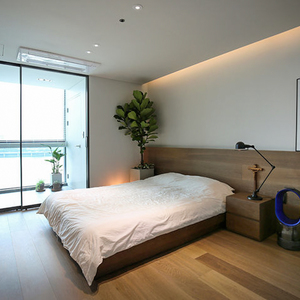
Builder confidence is sagging in the face of the Covid-19 pandemic, and a new study in Texas suggests that allowing construction job sites to remain open raises risks for both workers and the general public.
The National Association of Home Builders said the most recent NAHB/Wells Fargo Housing Market Index dropped from a level of 72 in March to 30 in April. A level of 50 is considered neutral, and the one-month plunge was the steepest in the 30-year history of the confidence indicator, NAHB’s Eye on the Economy report said.
It was the first time the indicator dropped below 50 in six years, and it was the lowest since mid-2012.
Robert Dietz, NAHB’s chief economist, said in a written summary of the findings that the trade group expected mitigation efforts to slow the spread of the virus would be successful by mid-May and allow a partial reopening of the economy. “However,” he adds, “‘normal’ conditions should not be expected until a vaccine is developed.”
All but six states have deemed construction work essential, allowing work to continue even while most people are under some kind of a stay-at-home order and many businesses remain shuttered, according to Yahoo Finance. Even so, nearly 3200 construction projects have been canceled in the U.S., an Ohio-based construction management software company said. (ConstructConnect’s interactive website keeps a tally of construction delays for both the U.S. and Canada, by state and by province.)
The six states that have halted residential and commercial construction are Washington, Michigan, Pennsylvania, New York, New Jersey, and Vermont, according to the Yahoo report. Wayne Maiorano, a North Carolina lawyer specializing in construction and development, said disruptions will continue because new projects are unlikely to break ground during the pandemic.
Texas study underscores risks
In Austin, Texas, a study found that keeping construction activities going during the pandemic could triple the number of Covid-19 hospitalizations of the general public, from 10,000 to 30,000, by August while the risk of hospitalization for construction workers would increase by 800%.
The study by researchers at the University of Texas at Austin assumed that 90% of residents in the surrounding community would remain under a shelter-in-place order while construction went forward without workers taking any special precautions, Jenn Goodman of Construction Dive reported.
The study was commissioned by Austin Mayor Steve Adler. There are some 50,000 construction workers in the Austin metro area (not including undocumented workers), representing about 4% of the workforce.
Adler was especially worried about the east side of Austin because of the high concentration of construction there. In March, Adler and a country judge had ordered a stop to all nonessential construction in Austin and Travis County. But the decision was overruled in early April by Texas Gov. Greg Abbott, whose executive order allowed construction to continue all over the state.
Trade unions press for closures
In New York, trade unions representing construction workers were instrumental in prompting Gov. Andrew Cuomo to tighten an earlier executive order that allowed construction projects to remain open on a limited basis.
Only specific projects deemed essential were permitted to move forward after the amended order went into effect, Construction Dive said.
Andrew Richards, an attorney specializing in construction practice in New York City, said union members were afraid of being exposed to the coronavirus, and that some workers had fallen ill while working on some job sites. Richards said the governor was pressured to make the change, not only by the unions but also by city lawmakers. “Trade unions definitely took a stand,” he said.
Even some unions that had originally wanted to keep job sites open came around when the risks became more apparent. Gary LaBarbera, president of the Building and Construction Trades Council of Greater New York, told Construction Dive: “For as long as this pandemic continues, the focus of the Building Trades will remain twofold: to protect the health and well-being of our members and do everything possible to keep essential worksites safe.”
What’s considered essential in New York? Projects that protect public health and safety, and those projects that would be dangerous to shut down. That includes roads, bridges, hospitals, healthcare facilities, affordable housing projects, and homeless shelters.
In Massachusetts, nearly 17,000 carpenters and painters have refused to work because of safety concerns and pressed Gov. Charlie Baker to order a statewide construction shutdown, The Boston Herald reported. Baker said “robust” guidelines were in place to protect workers, including social-distancing and zero-tolerance policy for having infected workers on site.
Baker said those measures were “appropriate” and has so far allowed some construction work, including residential projects, to continue. Union leaders disagreed.
“I’ve seen with my own two eyes that enforcement is not happening,” said Massachusetts Building Trades Council President Frank Callahan. “Our members want to work, but they’re scared. They don’t want to work in an unsafe environment.”
A sampling of views from construction workers and their families in this Construction Dive post shows deep misgivings about continuing work even though it means a loss of income.
“Our corporate offices and regional offices with salaried workers closed down so they can remain safe, yet we are required to show up and work in a giant, germ-filled Petri dish of a building,” an anonymous worker from Orlando, Florida, said. “I have three months of vacation saved up but can’t use it because the project is on a strict timeline. This is a giant disaster waiting to happen.”
-Scott Gibson is a contributing writer at Green Building Advisor and Fine Homebuilding magazine.
Weekly Newsletter
Get building science and energy efficiency advice, plus special offers, in your inbox.















3 Comments
If we learned anything of late, it's that "studies and projections" are horrible at making any predictions about this virus. For the Mayor of Austin to make decisions based upon more horrible projections is just a waste of time.
People in the construction industry are used to wearing masks. With some common sense safety protocols put into place most construction should be able to resume. If you are personally that concerned, stay home. If your employer won't provide the correct PPE, stay home, but for the rest of us willing to use a little common sense and go a little slower for safety sake, its time to open things back up here in the wonderful state of NY. Well at least in upstate NY where are currently no new cases and there haven't been that many cases to begin with.
On Martha's Vineyard island, despite the MA governor determination that construction was an essential activity, all the island towns issued emergency orders in March shutting down all construction... to some degree, this was prompted by the typical risks of contact, but more so, I think, because a significant number of construction workers commuted daily from the mainland on the ferry. And this was a way to cut off those outsiders, without running into legal issues. Construction is started to resume a week from Monday with significant safeguards in place, the most stringent being that a maximum of two workers are allowed on any job at the same time.....You can't argue with success, while COVID19 has surged in the rest of the state, there have been only a total about a dozen cases on the island (population of about 20,000), none requiring hospitalization. Nevertheless, there has been tremendous pushback by some arguing that they need to feed their families, government intrusion, the hospital CEO who made the recommendations knows nothing, ad infinitum.
For many places, I think shutting down construction was a response to being too late in enacting general measures against the virus. In British Columbia we responded early, but did not shut down construction. Despite being a very early location for Covid-19, our cases remain very low. I have not heard of any particular outbreaks linked to construction, other than at a remote work camp in the Alberta oil fields.
A coordinated response is required. You cannot just point at one industry and claim that a closure is good or bad, without other context.
Log in or create an account to post a comment.
Sign up Log in